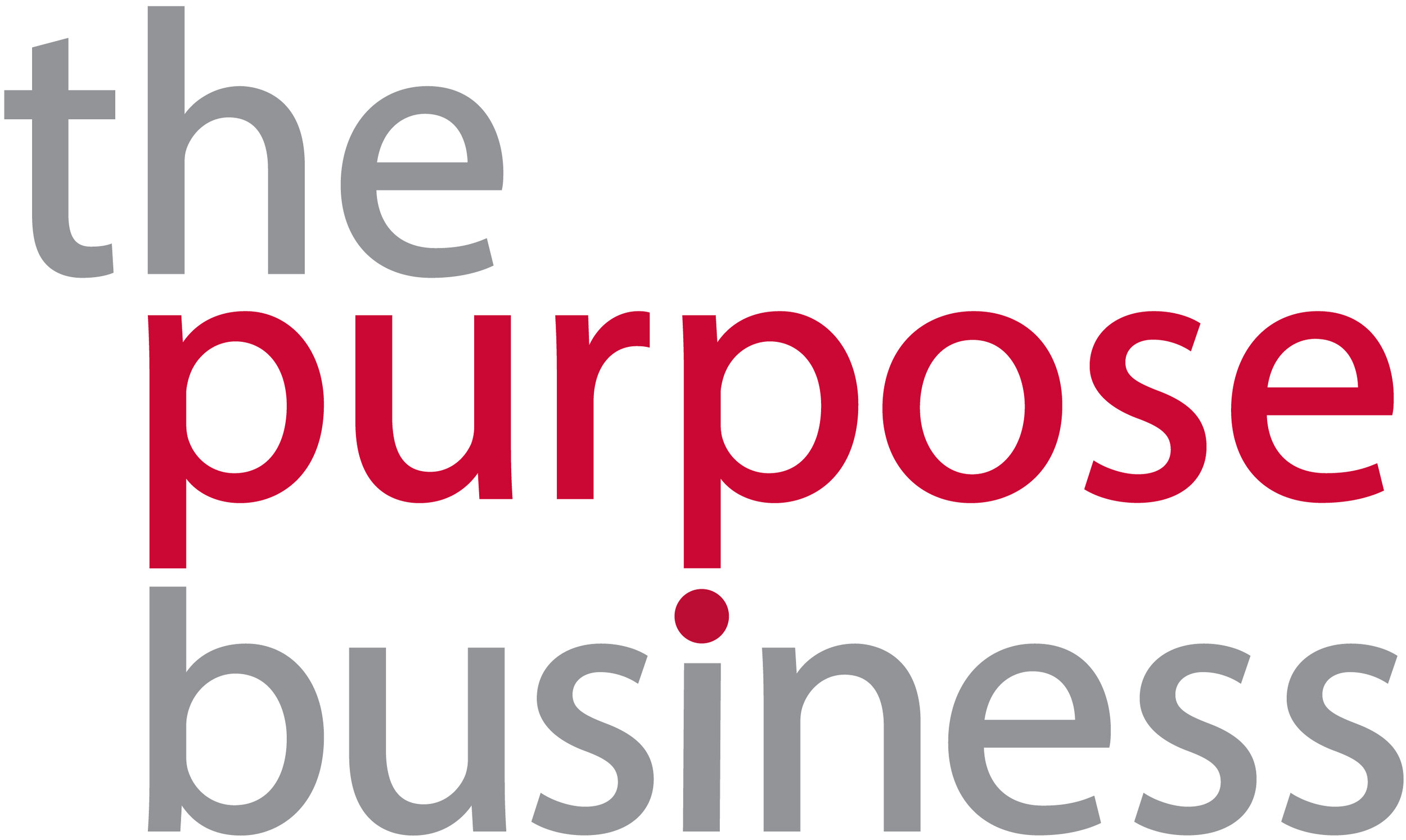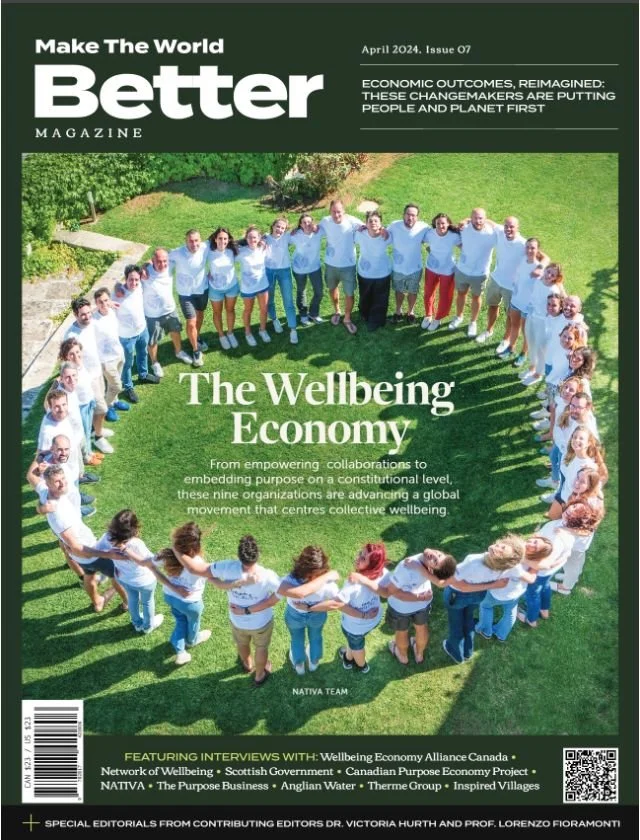The path to responsible consumption and production
This Earth Day 2021, Sustainability Advisor Rebecca Walker Chan urges Asian businesses to step up to the UN Sustainable Development Goals (SDGs) and highlights why getting to SDG 12 creates critical ripple effects to restore our earth.
Last year, The Purpose Business launched a report on Three SDGs that are critical for Asian businesses - and the 2030 Agenda.
We wanted to shed light on where Asia Pacific stands in achieving the Sustainable Development Goals (SDGs). With the region lagging on the 2030 Agenda, we identified three SDGs that can guide Asian businesses to meet regional commitments. There is an urgent need to focus on decent work and sustainable economic growth (SDG 8), responsible consumption and production (SDG 12), and life under water (SDG 14) as they are the farthest-reaching goals - and particularly relevant to businesses. From literature review to benchmarking top performing companies, we find that investing efforts in these three SDGs holds potential to create cascading benefits well beyond their individual targets and indicators - and can also amplify ripple effects across the other fourteen SDGs.
It's clear that the SDGs offer enormous potential as transformative drivers to changing business models and the private sector would be seriously remiss not to meet them. Yet many have fallen short on demonstrating meaningful and strategic alignment to the goals, their targets and indicators. At current UN projections, Asia Pacific is not expected to achieve any of the 17 SDGs. To achieve the SDGs means not only aligning with them, but also driving meaningful partnerships, changing corporate behaviour, and taking on responsible leadership. Here are some suggestions from The Purpose Business on how and why properly addressing SDG12 can have such crucial ripple effects:
SDG 12 – Taking responsibility for global resource mismanagement
SDG 12 encourages economic growth while decoupling from environmental degradation. It emphasises the transition towards sustainable consumption and production (SCP) patterns and demands a shift in how society and economies operate. Achieving this requires substantial change in both supply and demand of production and also resulting consumption behaviours.
Asia Pacific has actually regressed on SDG 12 since 2015. Significant gaps in data collection and under-resourced implementation have moved the region in the opposite direction from where SDG 12 needs to be headed. Strategic waste management is amongst the most needed (and achievable) aspects of SDG 12 in the region. However, solid waste, especially single-use plastics, has become the poster child issue that most countries are struggling to address.
While governments are obliged to protect the environment and regulate private sector activity, businesses are expected to address the social and environmental impacts of their products and services on their own. There is a need for stronger national SCP frameworks that are integrated into business practices, address consumer behaviour, and ensure improved adherence to international management norms of hazardous chemicals and wastes. Should governments start to implement SCP-related regulations, it will be corporates who will have to respond accordingly.
Overall, businesses already have the resources required to work toward achieving SDG 12. It is an immense growth opportunity to create solely sustainable ‘SDG 12-aligned’ products and offer services that promote sustainability. SDG 12 needs to be tackled from all angles - new systems lie at the core of solutions and if concerted public and private action is taken to change production and consumption patterns, it would create a cascading effect on several SDGs, including:
Reducing reliance on fossil-fuels would incite an accelerated shift to renewable energy (target 7.2)
Revamping supply chains would stimulate an increase of resource productivity (target 8.4)
Ramping up marketing for sustainable products would create new jobs (target 8.5) and business opportunities
Shifting production from the linear to circular model by introducing a circular economy (target 12.5) could change our reliance on natural resources
Tackling waste throughout the life-cycle of products and educating about proper waste disposal (target 12.8), would potentially lead to a reduction of waste and contamination of marine and terrestrial ecosystems (SDG 14)
Levels of engagement
This article dives into specific ways that businesses can contribute to the achievement of SDG 12. Building upon a concept that we refer to as the Responsible Growth Curve, we consider most organisations to be positioned along the three levels of engagement when it comes to the SDGs:
How to move forward?
To help get the ball rolling, TPB has curated some suggestions on how to better focus efforts and contributions for SDG 12, organised by level of engagement:
Follow
Utilise the UN Guiding Principles on Business and Human Rights to benchmark your company against the SDGs.
Build data collection and tracking capabilities to track your material consumption and footprint over time. Setting up this system may span an extended period as it requires collaboration across departments and groups. Reference disclosure standards and best practices in your country or region that are externally recognised by investors, regulators, consumers, and communities. This helps build your capacity to accurately share your consumption and production footprint and ensure future accountability, directly aligning with SDG target 12.6 and invariably other SDG 12 targets.
Fully map out your supply and value chains, then collect and manage data to determine your business’ material footprint.
Conduct assessments such as Life Cycle Analysis, GHG accounting and Environmental Impact Assessments to understand how your business consumes materials and interacts with the environment around them.
Sustain
Implement waste reduction initiatives in your operations. For example, some service industry companies have completely eradicated serving water in plastic bottles by installing their own water bottling plant, which allows them to serve customers water in reusable glass bottles. This not only reduces waste and emissions (for the creation and transport of the plastic bottles), but it can also cut costs in the long run and lead to business transformation.
Develop, implement, and sustain compliance with your own SCP policies.
Determine areas in your business where you can reduce your material footprint. This will look different for each business depending on industry and the sector. For companies that manufacture products, consider using alternative raw materials that have a lower environmental footprint, such as recycled materials and items sourced locally. For service industries, consider replacing processes to reduce your GHG and carbon footprint such as the use of clean or renewable energy (where available) or replacing fossil-fuel vehicles with electric alternatives, etc.
For businesses operating with and around food, consider processes that reduce food waste as a direct contribution to SDG target 12.3. This could mean finding alternative uses for food waste and scraps or reducing food wastage by providing serving sizes appropriate to consumption patterns.
Identify areas of your business where you can reuse or recycle where possible. Waste reduction is a focal component to SDG 12 and by doing so, your business can directly contribute to SDG target 12.5.
Achieve
Collaborate with suppliers, business partners and end-users to find mutually beneficial innovations that help achieve common goals along your value chain:
Upstream - work with suppliers and business partners to ensure that they adhere to your company's sustainable consumption and production policies. This is often implemented through robust environmental clauses in supplier code of conducts, then enforced through auditing processes. Procurement policies are also avenues to clearly communicate and extend your company's sustainability commitments to your partners. For example, a company can require their suppliers to source Forest Stewardship Council (FSC) certified paper to promote responsible forest management. It would also be wise to work with suppliers and business partners to help them transition to meet your company’s policies by providing training and support to their HR and corporate governance teams. Align these company standards with national policies and priorities to contribute directly to SDG target 12.7.
Downstream - Consider whether the end-user is sustainably consuming your company’s services or products. This may mean changing the way end-users fundamentally interact with your company, whether that is shifting from disposable single-use offerings to a renting or sharing business model or creating alternative end-of-life uses of your product or services. It may even involve supporting a circular economy through leveraging public-private partnerships or multi-stakeholder efforts to create proper channels for waste disposal/recycling.
Raise awareness about changing consumption patterns among consumers through marketing and education initiatives, directly contributing to SDG target 12.8.
Take the lead in overhauling food systems in a way that ensures good nutrition, uses resources sustainably and efficiently, and supports agro-ecological methods of production where chemical pesticides and fertilisers are no longer in use and agricultural biological diversity and small-scale farmers are of central importance.
Beyond the recommendations listed, there are countless opportunities to improve corporate SDG alignment and to lead the global development community towards purposeful SDG data collection and analysis, corporate SDG alignment and acting sustainably beyond financial donations.





